History
The history of the site goes back to the Punic and Numidian periods. The findings in the ruins of the ancient city testifies of a cultural diversity of the city influenced as well by Berbers, Carthaginians and mainly by Romans.
The inscriptions that have been found are in three ancient languages, Latin, Libyan, and Punic. [2] Epigraphy reflects particular local cults to Ba'al Hammon (equivalent to Roman Saturn) and Mercury.
Initially the "Civitas Popthensis" was probably a big village at the centre of an opulent agricultural land with cereal, olive growing, as many presses and livestock have been found in and out of the city. Not far from major trade routes, the city organized the local exchanges between the people of the plain and those of the mountains. Civitas Popthensis was located at the foot of the "Alpes Numidicae" and near the present border between Tunisia and Algeria [3]
Its period of maximum prosperity seems to be at the beginning of the 3rd century, under emperor Septimius Severus. From the area ruins and the evaluation of the flow of water, Julien Guey, a French archeologist, estimated the population of the agglomeration around 10,000 and 12,000 inhabitants. Civitas Popthensis had huge Roman baths and probably a Roman theater.
Paul Monciaux found a Christian epitaph of the beginning on the fifth century, that shows the importance of Christianity in the city when was under the influence of Saint'Augustine. [4] Christianity remained dominant until the arrival of the Arabs, who destroyed the city at the end of the seventh century.
However the history of the city is still not explored; furthermore 80% of this legacy is still buried under the Earth: Serious excavations are needed to illuminate the past of this city.

Carthage was the capital city of ancient Carthage, on the eastern side of the Lake of Tunis in what is now Tunisia. Carthage was one of the most important trading hubs of the Ancient Mediterranean and one of the most affluent cities of the classical world.
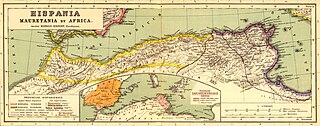
Mauretania is the Latin name for a region in the ancient Maghreb. It stretched from central present-day Algeria westwards to the Atlantic, covering northern present-day Morocco, and southward to the Atlas Mountains. Its native inhabitants, of Berber ancestry, were known to the Romans as the Mauri and the Masaesyli.

Lambaesis (Lambæsis), Lambaisis or Lambaesa, is a Roman archaeological site in Algeria, 11 km (7 mi) southeast of Batna and 27 km (17 mi) west of Timgad, located next to the modern village of Tazoult. The former bishopric is also a Latin Catholic titular bishopric.

Volubilis is a partly-excavated Berber-Roman city in Morocco situated near the city of Meknes that may have been the capital of the Kingdom of Mauretania, at least from the time of King Juba II. Before Volubilis, the capital of the kingdom may have been at Gilda.
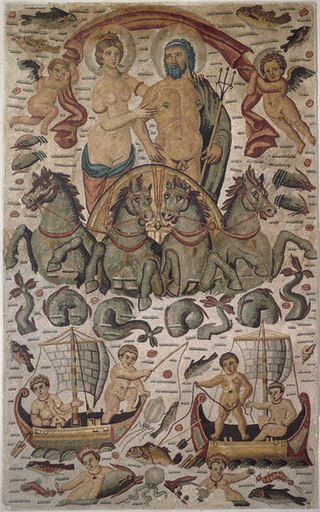
Cirta, also known by various other names in antiquity, was the ancient Berber and Roman settlement which later became Constantine, Algeria.
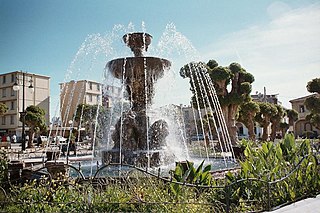
Cherchell is a town on Algeria's Mediterranean coast, 89 kilometers (55 mi) west of Algiers. It is the seat of Cherchell District in Tipaza Province. Under the names Iol and Caesarea, it was formerly a Roman colony and the capital of the kingdoms of Numidia and Mauretania.

Saldae was an important port city in the ancient Roman Empire, located at today's Béjaïa. It was generally a crossroads between eastern and western segments of Northern Africa, from the time of Carthage to the end of the Byzantine Empire from the continent.
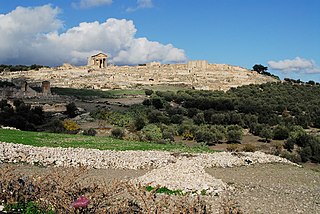
Dougga or Thugga or TBGG was a Berber, Punic and Roman settlement near present-day Téboursouk in northern Tunisia. The current archaeological site covers 65 hectares. UNESCO qualified Dougga as a World Heritage Site in 1997, believing that it represents "the best-preserved Roman small town in North Africa". The site, which lies in the middle of the countryside, has been protected from the encroachment of modern urbanization, in contrast, for example, to Carthage, which has been pillaged and rebuilt on numerous occasions. Dougga's size, its well-preserved monuments and its rich Numidian-Berber, Punic, ancient Roman and Byzantine history make it exceptional. Amongst the most famous monuments at the site are a Libyco-Punic Mausoleum, the Capitol, the Roman theatre, and the temples of Saturn and of Juno Caelestis.

Maktar or Makthar, also known by other names during antiquity, is a town and archaeological site in Siliana Governorate, Tunisia.
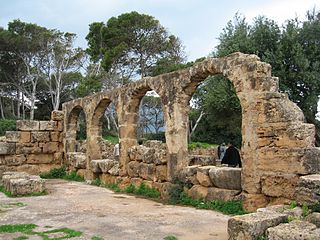
Tipasa, sometimes distinguished as Tipasa in Mauretania, was a colonia in the Roman province Mauretania Caesariensis, nowadays called Tipaza, and located in coastal central Algeria. Since 1982, it has been declared by UNESCO a World Heritage Site. It was declared a World Heritage Site in danger in 2002, but was removed from the danger list in 2006 following conservation efforts.
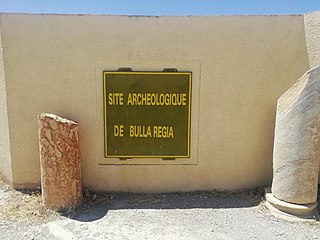
Bulla Regia was a Berber, Punic, and Roman town near present-day Jendouba, Tunisia. Its surviving ruins and archaeological site are noted for their Hadrianic-era semi-subterranean housing, a protection from the fierce heat and effects of the sun. Many of the mosaic floors have been left in place; others may be seen at the Bardo Museum in Tunis. There is also a small museum connected with the site.

Chemtou or Chimtou was an ancient Roman-Berber town in northwestern Tunisia, located 20 km from the city of Jendouba near the Algerian frontier. It was known as Simitthu in antiquity.
Icosium was a Phoenician and Punic settlement in modern-day Algeria. It was part of Numidia and later became an important Roman colony and an early medieval bishopric in the casbah area of actual Algiers.
![<span class="mw-page-title-main">Thamusida</span> Berber, Carthaginian, and Roman river port near [[Kenitra]], [[Morocco]]](https://upload.wikimedia.org/wikipedia/commons/thumb/d/d4/Thamusida%2C_Mauretania_Tingitana%2C_Morocco_%2838384660375%29.jpg/320px-Thamusida%2C_Mauretania_Tingitana%2C_Morocco_%2838384660375%29.jpg)
Thamusida was a Berber, Carthaginian, and Roman river port that was near the present-day towns of Kénitra and Mehdya in Morocco. Under the Roman Empire, it formed a part of the province of Mauretania Tingitana.

Madauros was a Roman-Berber city and a former diocese of the Catholic Church in the old state of Numidia, in present-day Algeria.

Pupput, also spelled "Putput", "Pudput", "Pulpud" and "Pulpite" in Latin, sometimes located in Souk el-Obiod ou Souk el-Abiod, is a Colonia in the Roman province of Africa which has been equated with an archaeological site in modern Tunisia. It is situated on the coast near the town of Hammamet, between the two wadis of Temad to the north and Moussa to the south. Much of the Pupput is buried under modern holiday developments which have been built over the major part of the site.
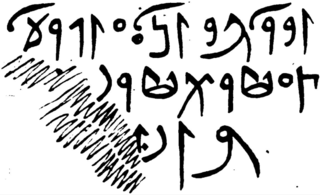
Gurzil was an important ancient Berber deity. He is known from two sources, the Latin poem Iohannis by the 6th-century Christian Roman poet Corippus and a Neo-Punic inscription from Lepcis Magna.

Auzia was a Roman-Berber colonia in present-day Sour El-Ghozlane, Algeria. The area was located around 150 km south-east of Algiers, in the ancient province of Mauretania Caesariensis.

Limisa is a town and archaeological site in Kairouan Governorate, Tunisia. It is located 50 kilometers west of kairouan. The town was a Roman Catholic diocese.
Rusazus was a Phoenician, Carthaginian, and Roman town located near Cape Corbelin, Algeria. Its ruins are near the town of Azeffoun.
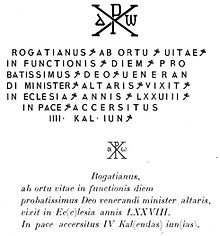














![<span class="mw-page-title-main">Thamusida</span> Berber, Carthaginian, and Roman river port near [[Kenitra]], [[Morocco]]](https://upload.wikimedia.org/wikipedia/commons/thumb/d/d4/Thamusida%2C_Mauretania_Tingitana%2C_Morocco_%2838384660375%29.jpg/320px-Thamusida%2C_Mauretania_Tingitana%2C_Morocco_%2838384660375%29.jpg)




